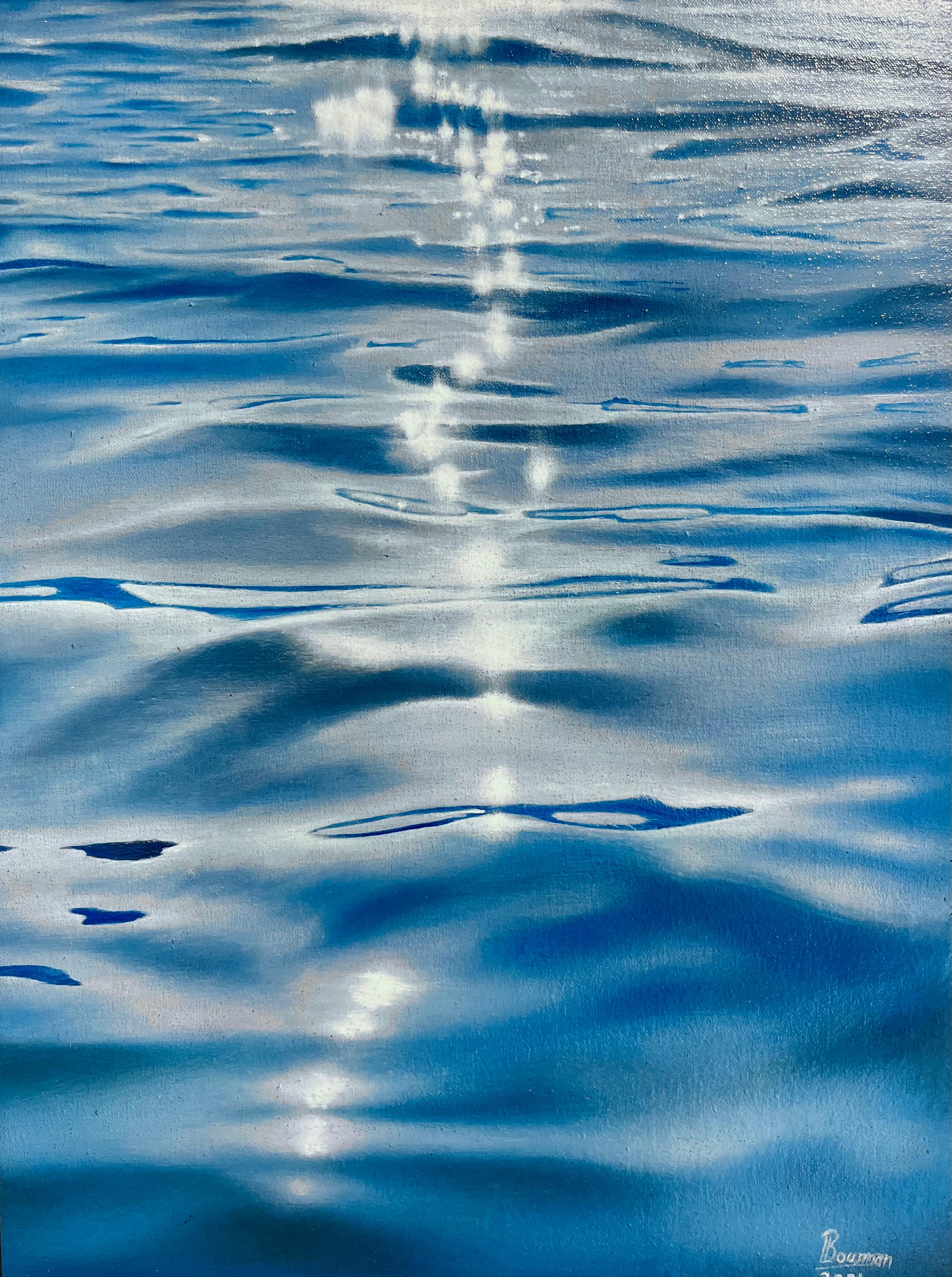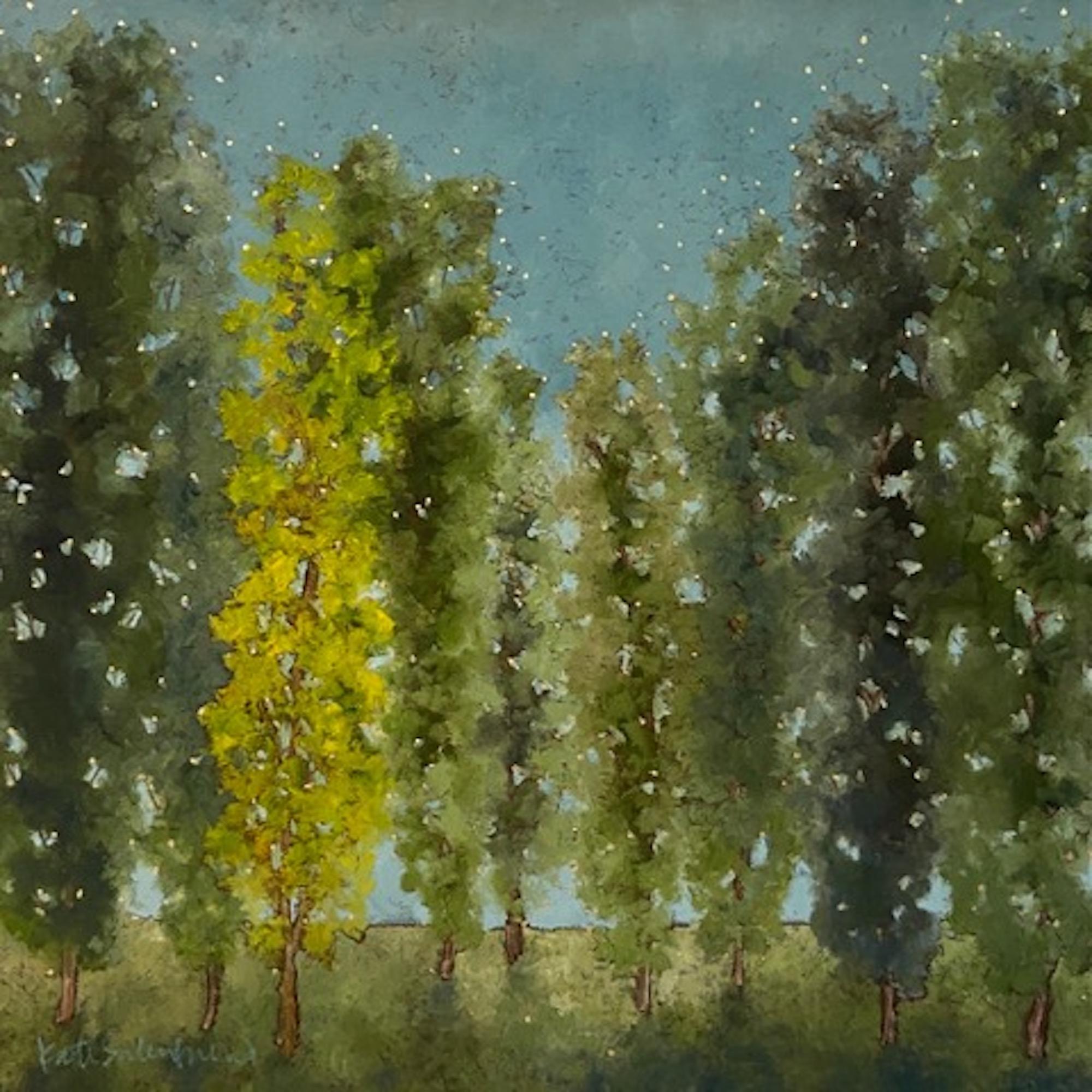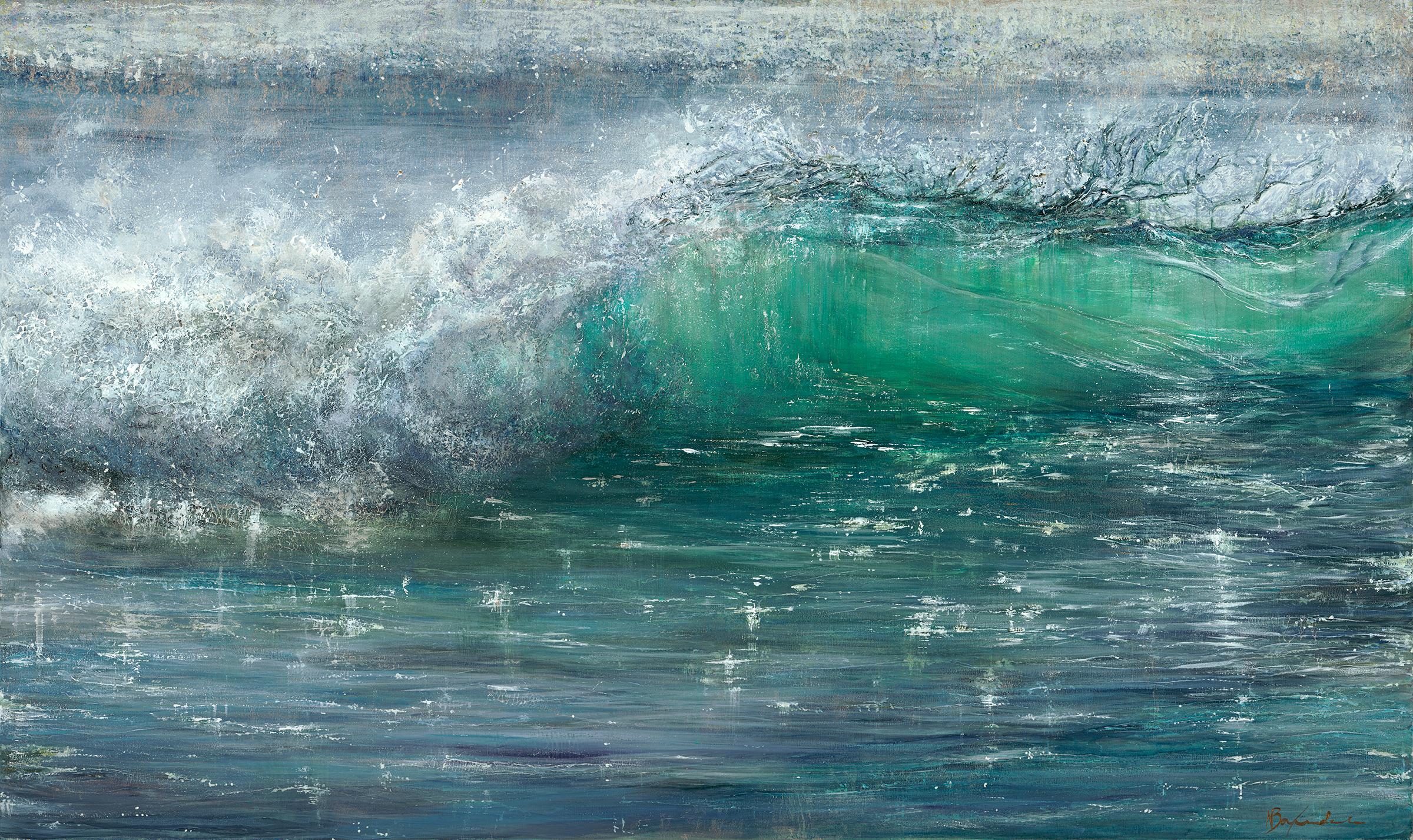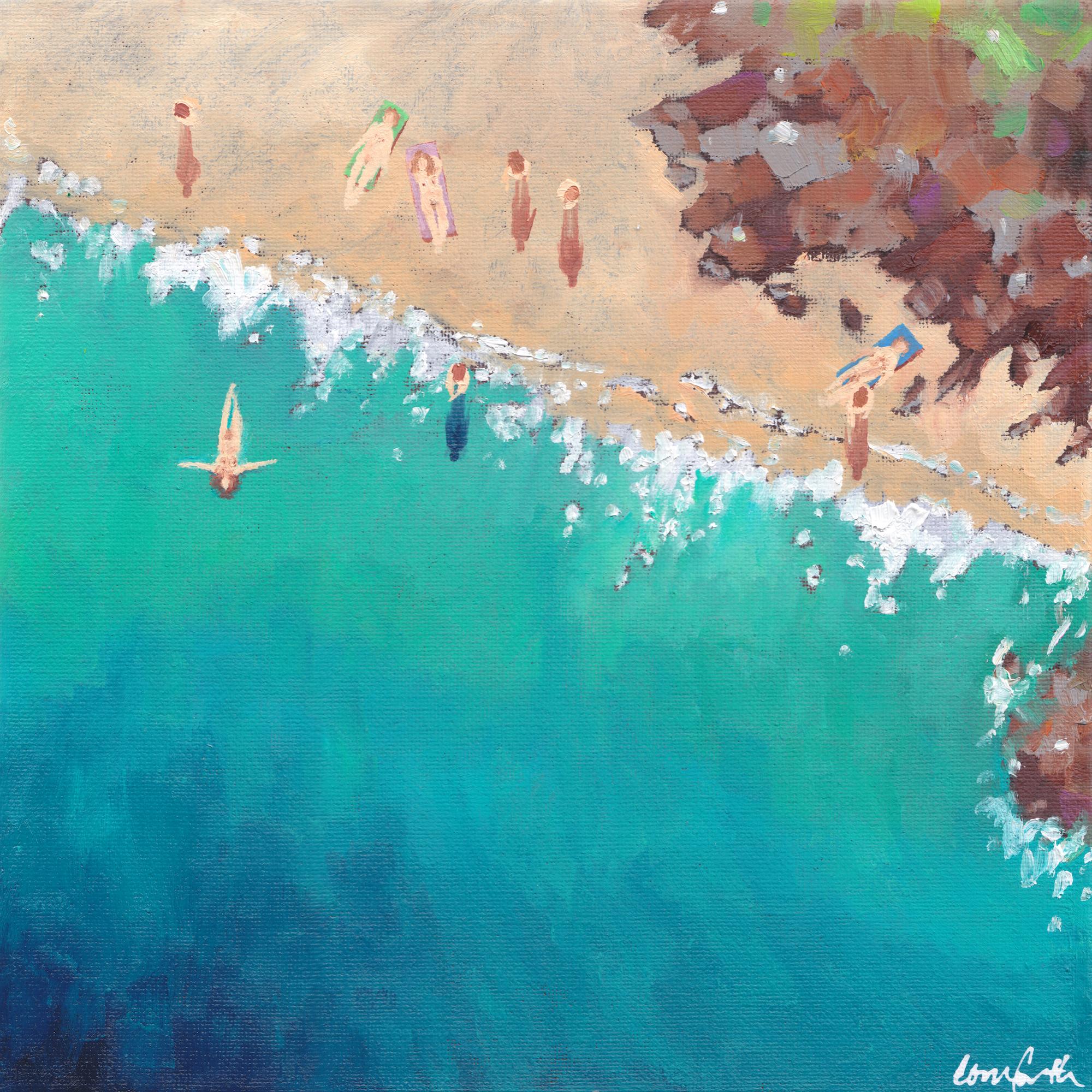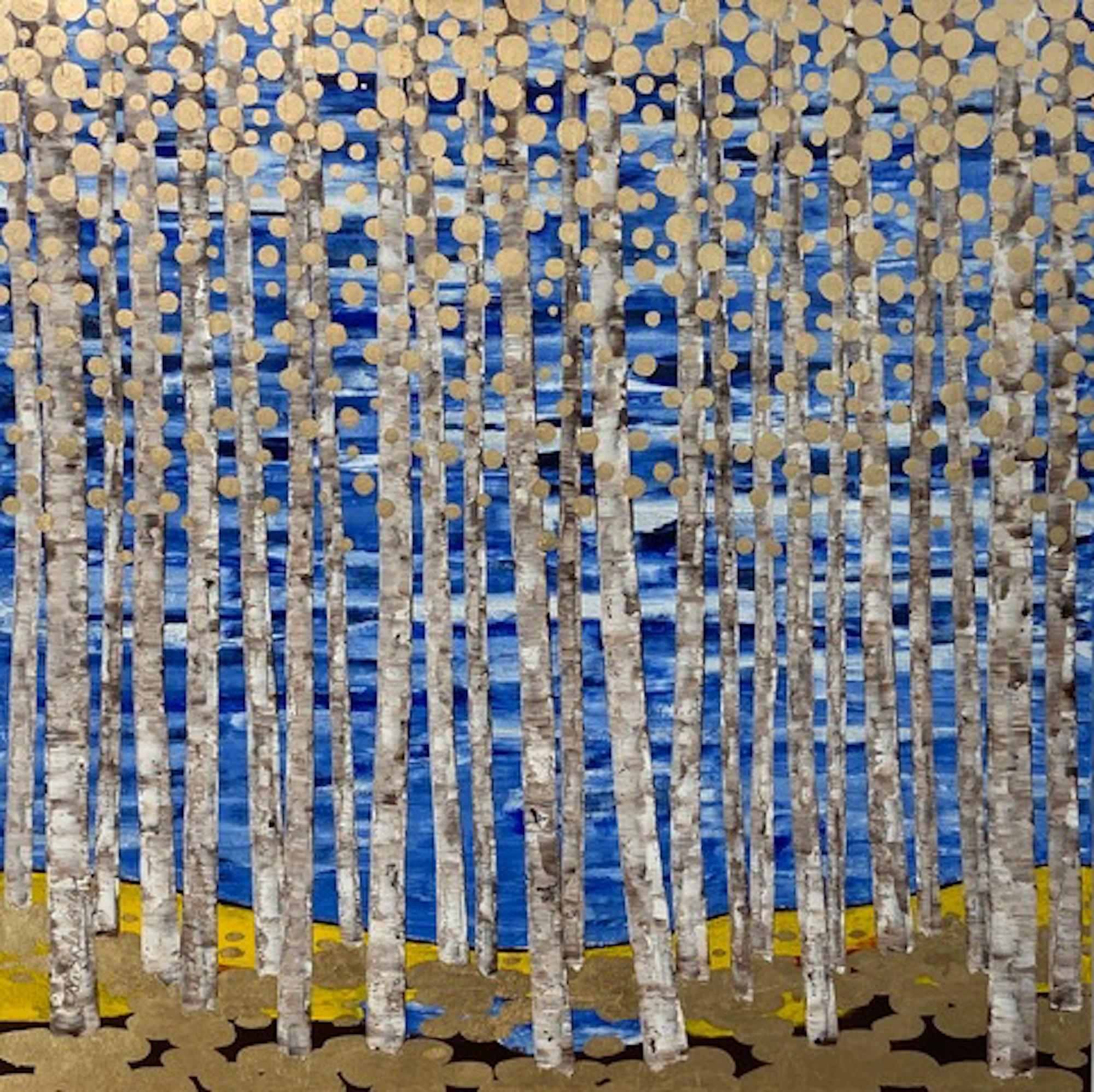Items Similar to "Filipino Farm Workers in Horse Carriage" 19th C. Oil on Canvas by F. de la Rosa
Want more images or videos?
Request additional images or videos from the seller
1 of 11
Fabian de la Rosa"Filipino Farm Workers in Horse Carriage" 19th C. Oil on Canvas by F. de la Rosa1894
1894
About the Item
FABIAN DE LA ROSA
Filipino, 1869 - 1937
FILIPINO FARM WORKERS IN HORSE CARRIAGE
signed & dated "F. de la Rosa, 1894" (lower left)
oil on canvas
42-3/4 x 23-3/4 inches (108 x 60 cm.)
framed: 46-1/4 x 27-1/4 inches (117 x 69 cm.)
PROVENANCE
Spanish Diplomat Collector
Fabian de la Rosa y Cueto (May 5, 1869 – December 14, 1937) was a Filipino painter. He was the uncle and mentor to the Philippines' national artist in painting, Fernando Amorsolo, and to his brother Pablo. He is regarded as a "master of genre" in Philippine art.
Fabian de la Rosa was born in Paco, Manila to husband and wife Marcos de la Rosa and Gorgonia Cueto. Born to a family of artists, he was exposed to art at an early age and learned to draw well before he could write. He was trained to sketch portraits and landscapes by his aunt, Marciana de la Rosa, when he was ten years old. He also apprenticed under his uncle, Simón Flores y de la Rosa, a well-known painter of portraits and church interiors from the nineteenth century. De la Rosa lived most of his life in the Philippines and visited Europe for the first time when he was 39. He married Gorgonia Tolentino on January 13, 1900.
De la Rosa received formal education at the age of 12 when he enrolled at the Escuela de Artes y Oficios in 1881. Three years into his training de la Rosa's father died, forcing the young painter to drop out of the school in order to help feed his family. It was during this time that he painted his first known masterpiece, La Perla de Lucban. In 1893, he entered the Escuela Superior de Pintura Escultura y Grabado at the age of 24 where he received training from Lorenzo Guerrero and Miguel Zaragoza. In 1898, de la Rosa won a contest for a scholarship to Spanish Art Academy of San Fernando in Madrid. However, the outbreak of the Philippine Revolution meant his dream would not materialize.
Later under the American regime, the Escuela would become one of the three founding units of the University of the Philippines (established in 1908) and renamed the UP School of Fine Arts. In 1908, he traveled to Europe as a pensionado through a scholarship opportunity given by the Germinal Cigar Factory. He attended the Académie Julian in Paris, France.
After traveling from Europe, he became one of the first instructors at the School of Fine Arts at the University of the Philippines, where he introduced to his students the decorated form of painting. De la Rosa became the full director of the school from 1927 to 1937.
Together with his wife, de la Rosa went back to Europe in 1928, where he painted in Paris for four months. He also traveled to Munich, Germany, Geneva, Switzerland, and Rome. Upon reaching Madrid, Spain, he held an exhibit of his works at the Ateneo de Madrid.
It is believed that de la Rosa was able to paint about 1,000 works. De la Rosa's works were divided by Aurelio S. Alvero into three time periods: those that are academic but are not giving importance to atmosphere and ambience; those that have academic form that gives importance to the environment that could be sensed; and those that play with the use of colors.
Even after his death, de la Rosa was recognized and was given the Patnubay ng Sining at Kalinangan (Guide of the Arts and Culture) by the City of Manila in 1968.
De la Rosa's Transplanting Rice received the golden award at the International Exposition held in St. Louis, Missouri in 1904. It is also during this exposition when his The Death of General Lawton was awarded the bronze prize.
An exposition about the paintings of de la Rosa was held at the Jorge B. Vargas Museum of the University of the Philippines, in Diliman, Quezon City, on January 14, 2007. The presentation was given the title "Fabian De la Rosa (1869-1938) Retrospective Exhibition," and was managed by the University of the Philippines with the assistance of the Spanish Program for Cultural Cooperation, a part of Vibal Publishing House, Inc.
- Creator:Fabian de la Rosa (1869 - 1937, Filipino)
- Creation Year:1894
- Dimensions:Height: 42.52 in (108 cm)Width: 23.63 in (60 cm)
- More Editions & Sizes:108 x 60 cm.Price: $496,601
- Medium:
- Movement & Style:
- Period:
- Condition:
- Gallery Location:Madrid, ES
- Reference Number:1stDibs: LU1281111175502
undefined
About the Seller
5.0
Vetted Seller
These experienced sellers undergo a comprehensive evaluation by our team of in-house experts.
Established in 1977
1stDibs seller since 2019
21 sales on 1stDibs
Typical response time: 2 hours
- ShippingRetrieving quote...Ships From: Madrid, Spain
- Return PolicyA return for this item may be initiated within 14 days of delivery.
More From This SellerView All
- "Florence´s Bridge", 19th Century Oil on Canvas by Antonietta BrandeisBy Antonietta BrandeisLocated in Madrid, ESANTONIETTA BRANDEIS Czechoslovakian, 1848 - 1926 FLORENCE´S BRIDGE signed "ABrandeis" lower right oil on canvas 10-3/5 x 14-4/5 inches (27 x 37.5 cm.) unframed PROVENANCE Private Collection, Barcelona Antonietta Brandeis (also known as Antonie Brandeisová) (1848–1926), was a Czech-born Italian landscape, genre and portrait painter, as well as a painter of religious subjects for altarpieces. She was born on January 13, 1848, in Miskovice (near Kutná Hora) in Bohemia, Austria-Hungary.[2] The first bibliographical indication of Antonietta Brandeis dates from her teens, when she is mentioned as a pupil of the Czech artist Karel Javůrek of Prague.[3] After the death of Brandeis' father, her mother, Giuseppina Dravhozvall, married the Venetian Giovanni Nobile Scaramella; shortly afterward the family apparently moved to Venice. In the 1867 registry of the Venetian Academy of Fine Arts, Brandeis is listed as being enrolled as an art student. At this time, Brandeis would have been nineteen, and one of the first females to receive academic instruction in the fine arts in Italy. In fact, the Ministry granted women the legal right to instruction in the fine arts only in 1875, by which time Brandeis had finished her education at the Academy. Brandeis’s professors at the Venetian Academy of Fine Arts include Michelangelo Grigoletti and Napoleone Nani for life drawing, Domenico Bresolin for landscape, Pompeo Marino Molmenti for painting and Federico Moja for perspective. Already during her first years of study there is evidence of Brandeis' skill-in her first year she is awarded prizes and honors in Perspective and Life Drawing. Brandeis’ continuing excellence and diligence in her artistic studies during the five years she spends at the Academy is attested to in the lists of prize-winning students of the Academy “Elenco alunni premiati Accademia Venezia in Atti della Reale Accademia di Belle Arti in Venezia degli anni 1866-1872”.[4] It includes numerous mentions of prizes and high honours won by Brandeis in Art History, Perspective, Life Drawing, Landscape and Anatomical Drawing, Drawing of Sculpture, and “Class of Folds”. It is in Venice at the Academy that Brandeis perfected her skills as a meticulous landscape and cityscape painter, with intricate and luminous details in the tradition of the eighteenth-century “vedutisti”. In 1870, while still a student at the Academy, she participated in her first exhibition; that of the Società Veneta Promotrice di Belle Arti with the oil painting Cascina della Madonna di Monte Varese. She is documented as having exhibited eight paintings during the years 1872 to 1876 with the Società Veneta Promotrice di Belle Arti, both landscapes and genre scenes. In the exhibit of 1875 her landscape Palazzo, Marin Falier is sold to M. Hall of London for 320 lire, a first indication of the success Brandeis will achieve with foreign collectors of her work (particularly the English and German visitors to Italy on the Grand Tour circuit). During these same years, she showed two paintings in the Florentine exhibit Promotrice Fiorentina. The first painting, entitled “Gondola” is a subject which she repeats in new variations throughout her career with great success. The second, perhaps a genre painting, is entitled “Buon dì !” The two paintings remained unsold and were presented at the same exhibition the following year, together with two more genre scene paintings. In 1876 and 1877 she exhibited three landscapes of Venice at the Promotrice Veneta, which sold to foreign collectors. In November 1877 Brandeis showed the large painting Palazzo Cavalli a Venezia at the exhibition of the Hungarian Fine Arts Society in Budapest. In both Florence and Budapest, Brandeis showed her work under the name “Antonio Brandeis”. The biographer De Gubernatis offers the following explanation for the change of name: “her first pictures received praise and criticism; she took the criticism, but when she was praised as a woman she was annoyed, and therefore exhibited under the name Antonio Brandeis.” During the years 1878 to 1893 Brandeis painted and exhibited numerous works, primarily scenes of Venice, and although she resided chiefly in that city she also traveled and painted in Verona, Bologna, Florence, and Rome. As well as in Venice and Florence, she exhibited in Turin, Milan, and Rome. In 1880 she was present at the International Exposition of Melbourne with three paintings: Palazzo Cavalli, A Balcony in Venice and The Buranella- native of Burano Island near Venice. Brandeis was a prolific painter, and often replicated her most popular subjects with only slight variations. She was represented in Venice at the photographer Naya’s studios in Piazza San Marco and in Campo San Maurizio and in Florence she collaborated with the picture dealer Giovanni Masini. During this period of intense activity painting landscapes en plein air and genre scenes, Brandeis also is documented in De Gubernatis as a painter of religious altarpieces. Several of these altarpieces can be found on the Island of Korcula in Croatia. Two are visible in the parish church of Smokvici and of in the church of St. Vitus in Blato. In the sacristy of the Cathedral of Korcula is a Madonna with Christ Child painted by Brandeis. For the same church she also painted a copy of the central panel of Giovanni Bellini’s triptych from the Venetian Church of Santa Maria dei Frari Gloriosa (1488). In 1899, for the main altar of the chapel of St. Luke in the Korcula town cemetery, Brandeis painted a St. Luke, which shows the sparkling colors and free impasto typical of her plein air oil paintings. On October 27th 1897 at the age of 49, Brandeis married the Venetian Antonio Zamboni, a knight and officer of the Italian Crown and knight of the Order of SS. Maurizio and Lazzaro. The couple continued to reside in Venice and Brandeis continued to show at Italian exhibitions in Venice, Florence, and Rome although more sporadically and with fewer works than before. Although she participated in the International Exposition of Watercolourists in Rome in 1906 with a “Study” and in the Società Promotrice delle Belle Arti in Florence in 1907 and 1908 with two oil paintings, De Gubernatis quotes Brandeis as saying in 1906, that even though she resides in Venice “I am a foreigner, and for some time I have not taken part in Italian Exhibitions, sending all my paintings to London.[3] Antonio Zamboni died 11...Category
1890s Realist Figurative Paintings
MaterialsOil, Canvas
- "Porte Saint-Denis, Paris", Early 20th Century Oil on Canvas by Joaquín PallaresLocated in Madrid, ESJOAQUÍN PALLARÉS ALLUSTANTE Spanish, 1853 - 1935 PORTE SAINT - DENIS signed "J. Pallares" (lower left) oil on canvas 10-1/2 x 15-3/4 inches (26.5 x 40...Category
Early 1900s Realist Figurative Paintings
MaterialsOil, Canvas
- "Saint Marks Square", 19th Century oil on canvas of Venice by Antonio ReynaBy Antonio Reyna ManescauLocated in Madrid, ESANTONIO REYNA MANESCAU Spanish, 1859 - 1937 SAINT MARKS SQUARE signed & located "A. Reyna, Venezia" (lower right) oil on canvas 15-1/2 x 21-3/8 ...Category
Early 1900s Realist Landscape Paintings
MaterialsCanvas, Oil
- "Preparing for fishing", 19th Century oil on canvas by E. Martínez CubellsBy Enrique Martinez Cubells y RuizLocated in Madrid, ESENRIQUE MARTÍNEZ CUBELLS Y RUIZ Spanish, 1874 - 1947 PREPARING FOR FISHING signed "E. M - CUBELLS. RUIZ" (lower right) oil on canvas laid on panel 11-1/4 X 15-1/4 inches (28.6 X 38....Category
1910s Realist Figurative Paintings
MaterialsCanvas, Oil, Panel
- "Moonlit River Scene", Early 20th Century Oil on Canvas by Luis Graner y ArrufiBy Luis Graner Y ArrufiLocated in Madrid, ESLUIS GRANER Y ARRUFI Spanish, 1863 - 1929 MOONLIT RIVER SCENE signed and dated "L. Graner, 1925" (lower right) Oil on canvas 20-1/8 X 30 inches (51X 76 cm.) framed: 25-3/4 X 35-3/4 inches (65 X 90.5 cm.) PROVENANCE NEAL AUCTION COMPANY, New Orleans, LA, USA Private Collection, Barcelona Graner paints this work, Moonlit on the river, during his stay in the United States in the last stage of his artistic life, from 1910 to 1928, in full stage of maturity. This artwork reflects the constant search of the artist for the effects of light in his work. This persistent concern for light remains throughout his artistic life, which he learned in his Parisian stage under the influence of the painter Frances Platour. The silver light of the moon and the small lights at distance, which are tiny foci of artificial light, reflecting the river water, forming a chromatic range of greens, ocher and pearly that give a certain mystery to the composition, creating a modern approach to the landscape, by placing the two large trees at the edge of the river in the foreground Luís Graner y Arrufí, Spanish (1863–1929) was a Catalan painter in the Realistic style. He was born in Barcelona, and studied at the Escola de la Llotja from 1883, with Antoni Caba (color/composition) and Benet Mercadé (drawing). During his final year at school, he received a grant to study in Madrid, where he copied and learned from the Old Masters at the Museo del Prado. After that, supported by a fellowship, he moved to Paris and became a member of the Academie des Beaux-Arts. Later, he returned to Barcelona, but continued to travel to cities throughout Europe, including Berlin, Munich and Düsseldorf. Influenced by Richard Wagner's concept of "Gesamtkunstwerk" (Total Work of Art), he was motivated to create his own total art experience and organized the "Sala Mercè" (Mercy Hall) in Barcelona's Rambla District. The project involved contributors from every artistic discipline, including the new field of cinematography. The room was decorated by Antoni Gaudí. Other participants included Adrià Gual, Santiago Rusiñol, Ramon Casas...Category
1920s Realist Landscape Paintings
MaterialsCanvas, Oil
- "Venetian scene", 19th Century oil on canvas laid on cardboard by Antonio ReynaBy Antonio Reyna ManescauLocated in Madrid, ESANTONIO REYNA MANESCAU Spanish, 1859 - 1937 VENETIAN SCENE signed & located "A. Reyna, Venezia" (lower right) oil on canvas laid on cardboard 8 ...Category
Early 1900s Realist Landscape Paintings
MaterialsCanvas, Cardboard, Oil
You May Also Like
- Motion Bliss - water study realism seascape original modern oil painting photoLocated in London, ChelseaThis realist fractal study by Leavon Bowman involves an influence of the vibrant Caribbean landscape and an appreciation for the dynamic flow of nature. ...Category
21st Century and Contemporary Realist Landscape Paintings
MaterialsCanvas, Oil
- Venetian vedutist (Canaletto follower) - Late 19th century painting - VeniceBy Giovanni Antonio Canal (Canaletto)Located in Varmo, ITFollower of Antonio Canal, known as Canaletto (19th century) - Venice, view of the Island of S. Giorgio from the Punta della Dogana. 30 x 40 cm without frame, 41.5 x 51.5 cm with fr...Category
Late 19th Century Realist Landscape Paintings
MaterialsCanvas, Oil
- Dreams-original modern abstract trees landscape oil paintings-contemporary ArtBy Kate SalenfriendLocated in London, ChelseaDive into the ethereal world of "Always in my Dream" by the accomplished artist Kate Salenfield. This original landscape painting, executed with mastery in oil on canvas, stands as a...Category
21st Century and Contemporary Realist Figurative Paintings
MaterialsCanvas, Oil
- Brilliance-original modern Ocean-seascape oil painting-Contemporary ArtLocated in London, ChelseaIn the dynamic and compelling masterpiece "Brilliance" by Nikki Baxendale, the canvas becomes a stage for the powerful performance of the ocean's forces. This original seascape paint...Category
21st Century and Contemporary Realist Landscape Paintings
MaterialsCanvas, Oil, Acrylic
- Pedn Founder-original impressionism seascape coast painting-contemporary ArtLocated in London, Chelsea"Pedn Founder" by Lenny Cornforth is a captivating original seascape painting that transports viewers to the serene shores of Cornwall. Crafted with oil on canvas in the style of con...Category
21st Century and Contemporary Realist Landscape Paintings
MaterialsCanvas, Oil
- Western Light-original modern abstract landscape oil painting-contemporary ArtBy Kate SalenfriendLocated in London, ChelseaEnter the enchanting realm of "Western Light" by the gifted artist Kate Salenfield. This original abstract landscape painting, rendered in oil on canvas, is a testament to Salenfield...Category
21st Century and Contemporary Realist Figurative Paintings
MaterialsCanvas, Oil
